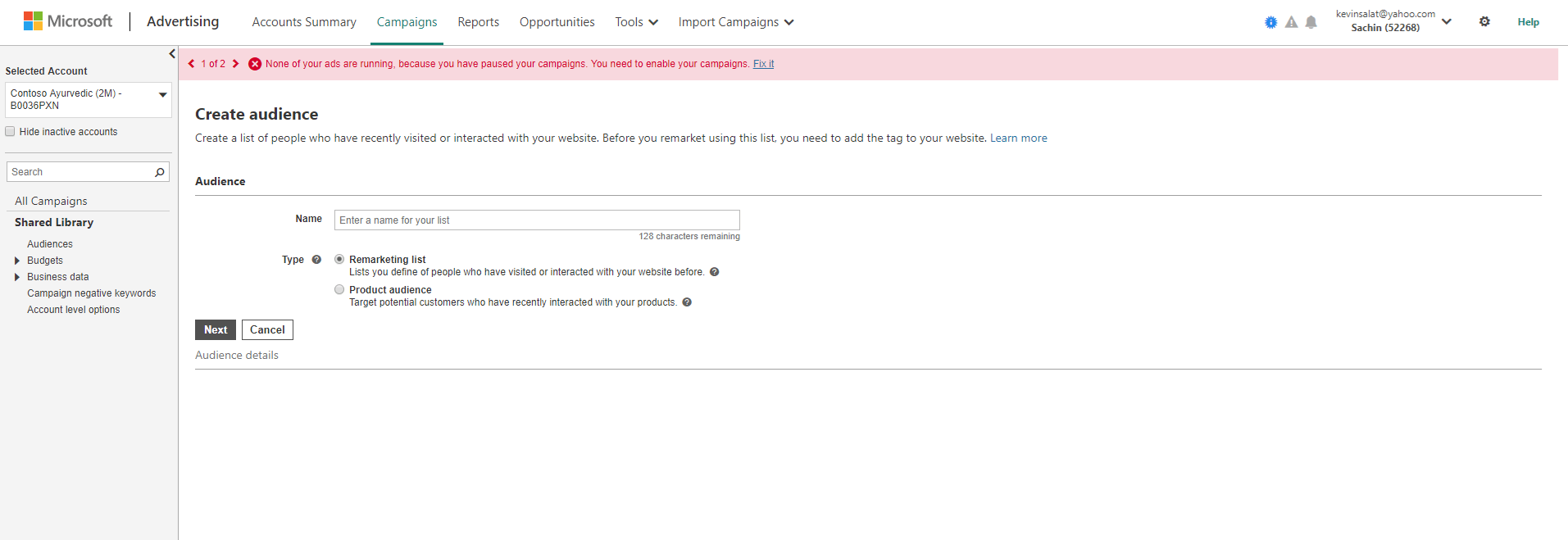If you’re not remarketing keywords, you’re missing out
Targeting methods have moved beyond keywords and SMBs should now be interacting with potential customers alongside their entire purchase cycle.
As a small or medium sized business owner, you have been rocking it at PPC lately. You’ve got a few different campaigns running, you’ve developed a solid list of keywords, optimized for mobile, and you even revisit these campaigns consistently to make sure they bring about solid lead generations (the whole point of PPC, right?). Great job!
Quick question though: Are you remarketing those keywords? As the PPC landscape has become more sophisticated, targeting methods have gone beyond keywords, allowing small and medium-sized businesses to interact with potential customers alongside their entire purchase cycle. In other words, if you’re not remarketing keywords, you’re missing out!
What’s remarketing?
Remarketing campaigns allow you to continually engage with people who have visited your website, but didn’t make a purchase. Through targeted pay-per-click ads, you can make sure your brand is front and center at relevant places throughout the internet, reminding the user of their interaction with you and encouraging them to revisit and make a purchase.
Mirroring traditional PPC marketing, these ads don’t cost you anything until someone clicks on them, and are an effective way to drive sales by reconnecting with those who have already shown an interest in your business. Research from Barilliance, an e-commerce personalization tools developer, found the average cart abandonment rate to be 78.65 percent in 2017. There is huge potential to target these customers and guide them back towards your small business using a remarketing campaign.
How does it work?
Let’s say you’re an online retailer, and I’m a potential customer searching for a silver necklace on your website. I go through different touchpoints and add a specific necklace to my cart before pulling the plug, no sale. With a strong remarketing campaign in place, that’s not the end of my journey on your site. You can pull information based on how much time I spent on your site and use that to continue to reach out me. You know I had at least some level of purchase intent, so the next time I’m online searching for jewelry, you could go back and remarket that exact necklace I added to your cart, using the name of the manufacturer, the price, etc. and make a very targeted ad, specific to me.
Retargeting essentially keeps your brand top of mind with a potential customer and motivates them to get to know your business better.
How do I set-up a remarketing campaign?
To get started, use your ad words account to create a remarketing list. On Microsoft Advertising, you do this by clicking on the Campaigns page and then Shared Library, then Audiences. Under the Audiences tab, click Create Remarketing List.
Name your list, then select the type of website visitor and set of rules that define who to include. This places a “remarketing tag” on your website and allows you to define what specific pages, products, or services you want to focus these ads on.
For example, if a few of your products are luxury items that customers naturally research before purchase or highly competitive products that push customers to comparison shop, you can focus remarketing campaigns specifically on those landing pages. It’s not all or nothing. Once a customer visits that specific page, a cookie is left on their browser and will push out your targeted PPC ads when they visit other relevant websites.
These remarketed ads are highly customizable, allowing you to segment visitor groups based on their page history and at what touchpoint they left your site. Advanced data reporting also helps you determine how long a person’s cookie remains in your remarketing list, and what kind of ad messaging would be the most relevant to them. For example, if someone adds an item to your cart, but abandons it, you could send a custom remarketing message saying if they come back within two weeks, they get a discount. The possibilities are endless.
People who may have been merely curious about your small business can be converted into a paying customer through retargeting. As they continue to see your brand name in important places throughout their online product search, you become increasingly legitimate and recognizable. This re-engagement deepens your relationship with them and gently guides them back your website when they are ready to make a purchase.
If you’re ready to start your own remarketing list, check out this easy how-to from Microsoft Advertising.
Contributing authors are invited to create content for Search Engine Land and are chosen for their expertise and contribution to the search community. Our contributors work under the oversight of the editorial staff and contributions are checked for quality and relevance to our readers. The opinions they express are their own.
Related stories

